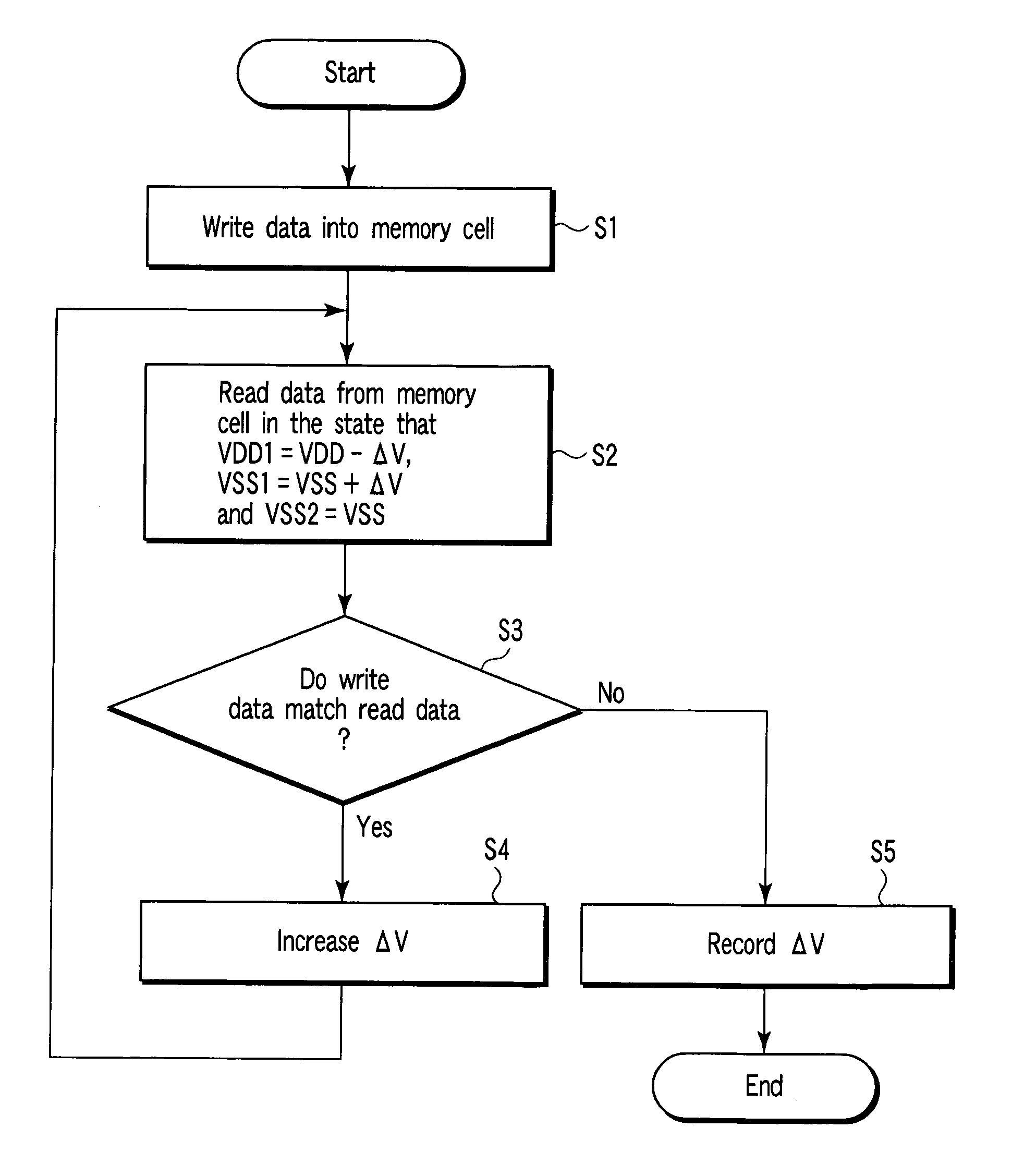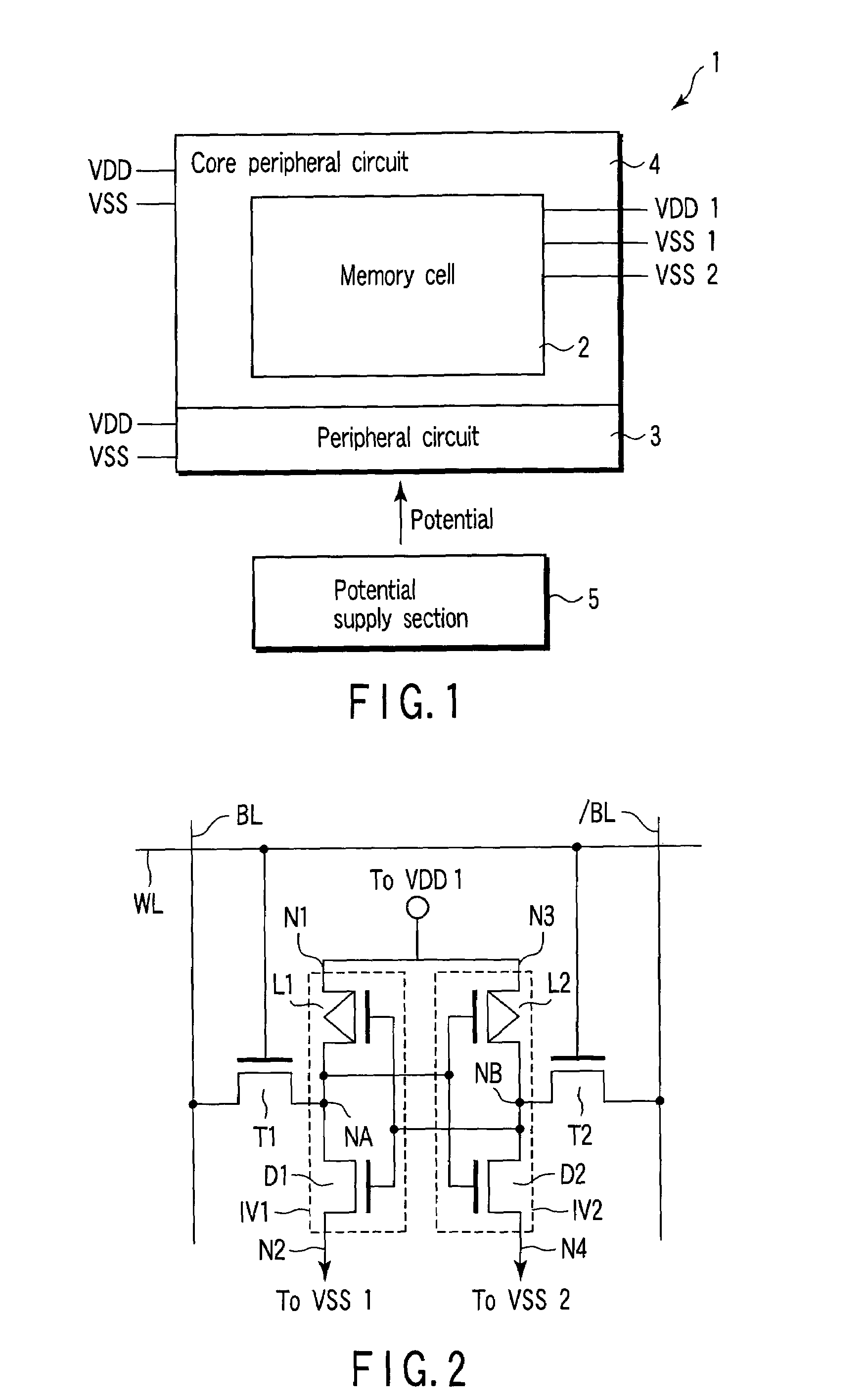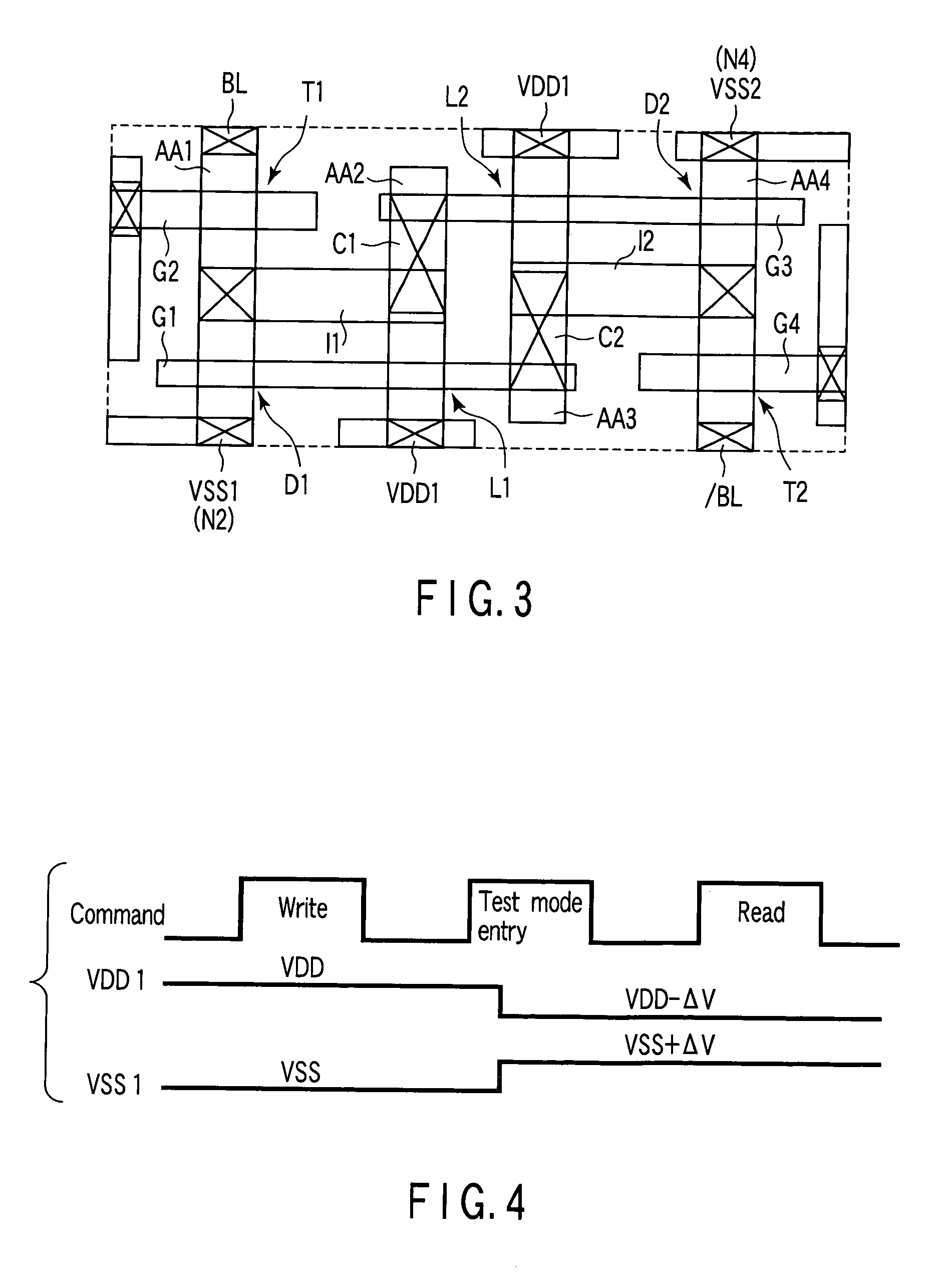Static random access memory and pseudo-static noise margin measuring method
a random access memory and noise margin technology, applied in static storage, information storage, digital storage, etc., can solve the problems of long measurement time, data destruction is harder to occur, and the inability to measure snm in memory cells on chips as products,
- Summary
- Abstract
- Description
- Claims
- Application Information
AI Technical Summary
Benefits of technology
Problems solved by technology
Method used
Image
Examples
first embodiment
(First Embodiment)
[0023]FIG. 1 is a diagram illustrating a main section of a static random access memory 1 according to a first embodiment of the present invention. As shown in FIG. 1, the static random access memory 1 includes a memory cell array 2, a peripheral circuit 3, and a core periphery circuit 4. The memory cell array 2 has a constitution such that a plurality of memory cells, mentioned later, are provided. The peripheral circuit 3 has a data input / output circuit that gives and receives data to / from an outside, a command / address input circuit that supplies a command and an address to a memory, and a control circuit such as a decoder circuit. The core peripheral circuit 4 has a row decoder, a column decoder, a sense amplifier, and the like.
[0024]The memory cell array 2, the peripheral circuit 3, and the core peripheral circuit 4 are provided with an independent potential supply end. That is to say, the memory cell array 2 is provided with a potential supply end VDD1 for appl...
second embodiment
(Second Embodiment)
[0046]In the first embodiment, SNM is measured in a state that a uniform potential is applied to the nodes N1 and N3 for applying a high potential to the inverters IV1 and IV2. In contrast, in the second embodiment, different potentials are applied to the nodes N1 and N3, respectively. FIG. 7 is a diagram illustrating a main section of the static random access memory 11 according to a second embodiment of the present invention. FIG. 8 illustrates a state that the memory cell according to the second embodiment, and a state of the potential of the main section in the SNM measuring method according to the second embodiment. As shown in FIGS. 7 and 8, the memory cell 12 has a potential supply end VDD2 for applying a power-source potential in addition to the constitution in FIG. 1. The potential supply end VDD1 is electrically connected to the inverter IV1, and the potential supply end VDD2 is electrically connected to the inverter IV2.
[0047]The SNM measuring method is...
PUM
 Login to View More
Login to View More Abstract
Description
Claims
Application Information
 Login to View More
Login to View More - R&D
- Intellectual Property
- Life Sciences
- Materials
- Tech Scout
- Unparalleled Data Quality
- Higher Quality Content
- 60% Fewer Hallucinations
Browse by: Latest US Patents, China's latest patents, Technical Efficacy Thesaurus, Application Domain, Technology Topic, Popular Technical Reports.
© 2025 PatSnap. All rights reserved.Legal|Privacy policy|Modern Slavery Act Transparency Statement|Sitemap|About US| Contact US: help@patsnap.com



